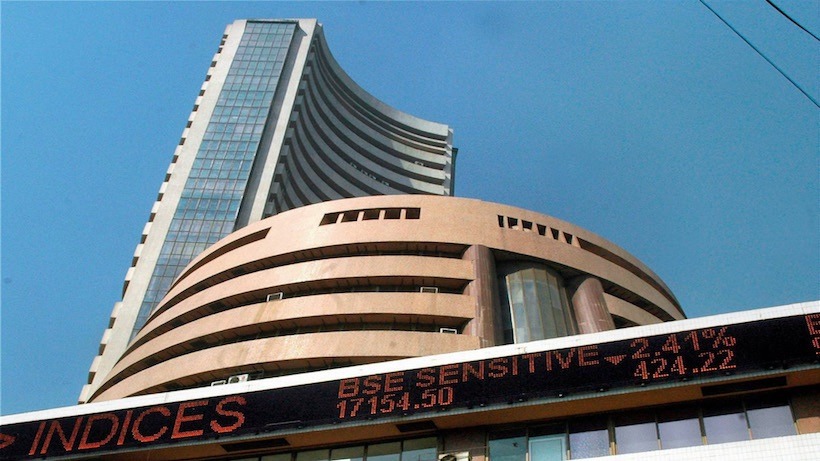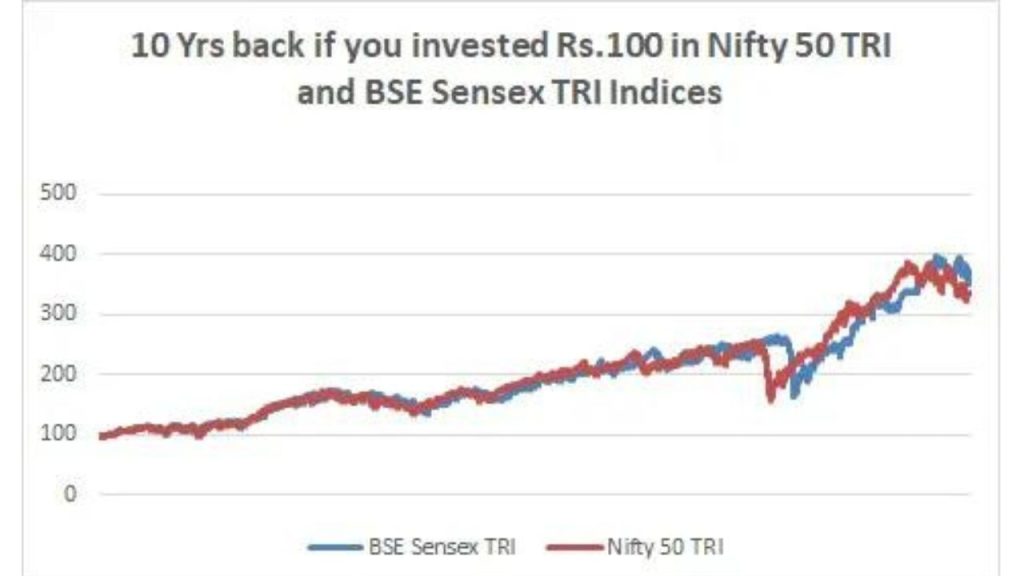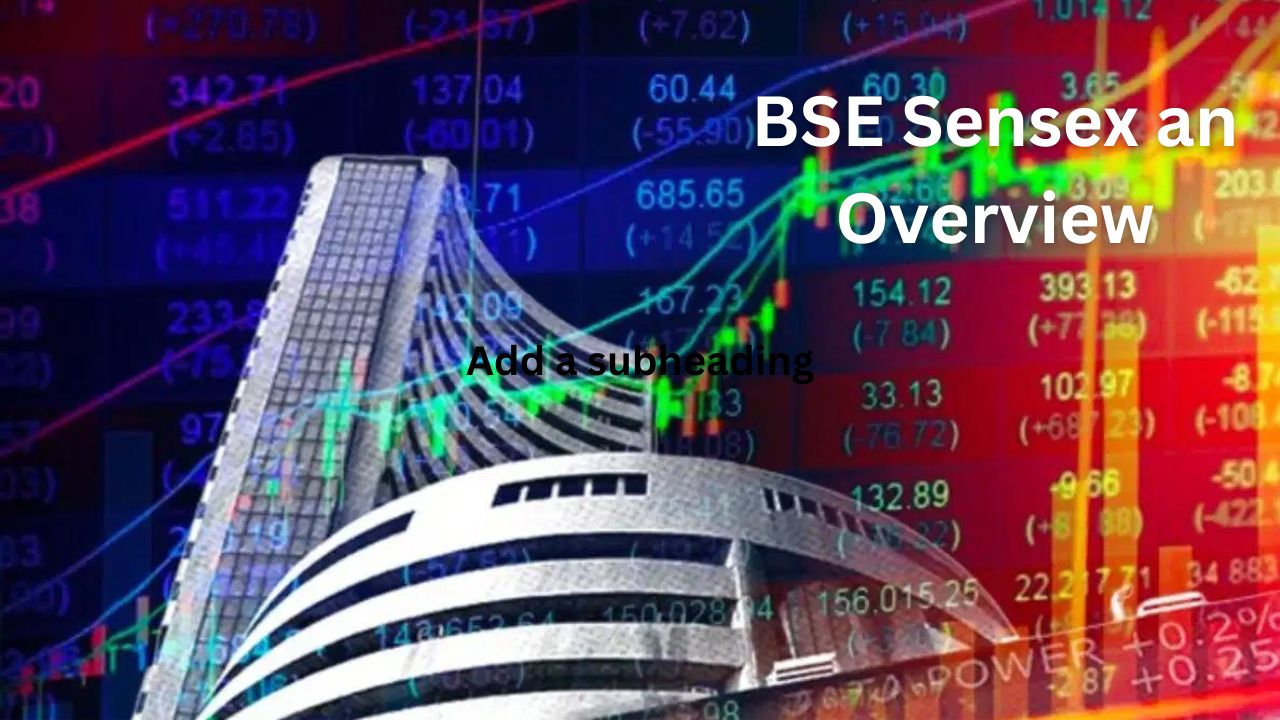BSE Sensex an Overview: The SENSEX, a short form of the BSE-Sensitive Index, is a Market capitalization-weighted index of 30 stocks representing a sample of large, well-established, and financially sound companies. There are many stock exchanges in India. The BSE Sensex is one of them. SandP BSE or SENSEX is a metric that reviews the performance of shares of companies listed on BSE. SandP stands for Standard and Poor’s, an international credit rating agency. It works to create indexes. This agency has licensed the index to BSE. Hence SandP is connected with BSE. Let’s talk about BSE now. Check out NABARD.
Quick Links
BSE Sensex An Overview

It is the oldest index in India and has acquired a unique place in the collective consciousness of investors. The index is widely used to measure the performance of the Indian stock markets.
SENSEX is considered to be the pulse of the Indian stock markets as it represents the underlying universe of listed stocks at The Stock Exchange, Mumbai. Further, as the oldest index of the Indian Stock market, it provides time series data over a fairly long period (since 1978-79). Also, check Payment Gateways.
BSE SENSEX opening time
The two major stock exchanges in India are BSE and NSE.
Both these exchanges are open from Monday to Friday and are closed during weekends and other government holidays.
During the trading session, the exchanges are open from 9:15 am to 3:30 pm.
However, the timing of the Bombay Stock Exchange is separated into three main sessions to reduce market volatility.
- Normal session
- Pre-opening session
- Post-closing session
Normal session: There is no break in this session, it starts at 9:15 am and closes at 3:30 pm. It follows the bilateral matching session.
Pre-opening session: This is the time before the stock market opens. It is divided into three parts as shown in the table below:
| Session time | activity |
| 9:00 AM-9:08 AM | Order entry session |
| Allows you to place orders to buy and sell stocks. | |
| During the session, orders are allowed to be modified or canceled. | |
| 9:08 AM-9:12 AM | Calculation of opening price of normal session and matching of orders |
| Modifying or canceling orders is not allowed. | |
| 9:12 AM-9:15 AM | This is a buffer method. |
| Used for easy replacement of pre-opening session before normal session. |
The initial value of the normal session is calculated using the multilateral order matching system. This reduces volatility once the market opens. But even then, most people are not able to take advantage of the pre-order session and hence still there is a lot of volatility in the market.
Post-closing session: Finally comes the post-closing session, ie the time after the market is closed. It lasts between 3:40 pm and 4:00 pm. The post-closing session also allows the trader to buy or sell the stock at the closing price of the stock. If the trader is available, then your trade will be confirmed at the agreed price. See Payment Banks.
Bse Sensex closing time
The market closes at 3:30 PM and the time between 3:30 PM and 3:40 PM is the time when the price calculator closes.
The closing price of any stock is based on the weighted average of the price between 3:00 PM and 3:30 PM. If in any case, the trader fails to trade between these periods, then you can make an aftermarket order (AMO). However, it does not allow the actual trade but allows you to buy or sell orders.
Main objective:
The SENSEX is the benchmark index of the Indian Capital Markets with wide acceptance among individual investors, institutional investors, foreign investors, and fund managers.
The objectives of the index are:
* To measure market movements
Given its long history and its wide acceptance, no other index matches the SENSEX in reflecting market movements and sentiments.
SENSEX is widely used to describe the mood in the Indian Stock markets.
* Benchmark for funds performance
The inclusion of blue chip companies and the wide and balanced industry representation in the SENSEX makes it the ideal benchmark for fund managers to compare the performance of their funds.
* For index-based derivative products
Institutional investors, money managers, and small investors all refer to the SENSEX for their specific purposes The SENSEX is in effect the proxy for the Indian stock markets.
The country’s first derivative product i.e. Index-Futures was launched on SENSEX. Check out the Cash Reserve Ratio (CRR).

Market Capitalization:
The script should figure in the top 100 companies listed by market capitalization. Also, the market capitalization of each scrip should be more than 0.5 %% of the total market capitalization of the Index i.e. the minimum weight should be 0.5 %%.
Since the SENSEX is a market capitalization-weighted index, this is one of the primary criteria for scrip selection.
(Market Capitalization would be averaged for the last six months)
Related Articles
- Stock market…An overview
- Various Terms of Banking
- Earning Per Share
BSE Sensex Liquidity:
- (i) Trading Frequency: The scrip should have been traded on every trading day for the last year. Exceptions can be made for extreme reasons like scrip suspension etc.
- (ii) Number of Trades: Number of Trades: The scrip should be among the top 150 companies listed by average number of trades per day for the last year.
- (iii) Value of Shares Traded: Value of Shares Traded: The scrip should be among the top 150 companies listed by the average value of shares traded per day for the last year.
BSE Sensex Continuity:
Whenever the composition of the index is changed, the continuity of the historical series of index values is re-established by correlating the value of the revised index to the old index (index before revision).
The back-calculation over the last one-year period is carried out and the correlation of the revised index to the old index should not be less than 0.98. This ensures that the historical continuity of the index is maintained.
Industry Representation:
Scrip selection would take into account a balanced representation of the listed companies in the universe of BSE.
The index companies should be leaders in their industry group.
Listed History:
The script should have a listing history of at least one year on BSE.
Track Record:
In the opinion of the Index Committee, the company should have an acceptable track record.
Beta of SENSEX scrips:-
Beta measures the sensitivity of a scrip movement relative to movement in the benchmark index i.e. SENSEX.
- A Beta of one means that for every change of 1%% in the index, the scrip moves by 1%%.
- Statistically, Beta is defined as Covariance (SENSEX, Stock )/ Variance(SENSEX)
Note: Covariance and variance are calculated from the Daily Returns data of the SENSEX and SENSEX scrips.
SENSEX Calculation:-
SENSEX is calculated using a Market capitalization-weighted methodology.
As per this methodology, the level of index at any point in time reflects the total market value of 30 component stocks relative to a base period. (The market capitalization of a company is determined by multiplying the price of its stock by the number of shares issued by the company).
An index of a set of combined variables (such as price and number of shares) is commonly referred to as a ’Composite Index’ by statisticians. A single indexed number is used to represent the results of this calculation to make the value easier to work with and track over time. It is much easier to graph a chart based on indexed values than one based on actual values.
The base period of SENSEX is 1978-79.
The actual total market value of the stocks in the Index during the base period has been set equal to an indexed value of 100. This is often indicated by the notation 1978-79=100. The formula used to calculate the Index is fairly straightforward.
However, the calculation of the adjustments to the Index (commonly called Index maintenance) is more complex. The calculation of SENSEX involves dividing the total market capitalization of 30 companies in the Index by a number called the Index Divisor.
The Divisor is the only link to the original base period value of the SENSEX.
It keeps the Index comparable over time and is the adjustment point for all Index maintenance adjustments.
During market hours, prices of the index scrips, at which the latest trades are executed, are used by the trading system to calculate SENSEX every 15 seconds and disseminated in real time.
How is the closing Index calculated:-
- The closing SENSEX is computed by taking the weighted average of all the trades on SENSEX constituents in the last 15 minutes of the trading session.
- If a SENSEX constituent has not traded in the last 15 minutes, the last traded price is taken for computation of the Index closure.
- If a SENSEX constituent has not traded at all in a day, then its last day’s closing price is taken for computation of Index closure.
- The use of the Index Closure Algorithm prevents any intentional manipulation of the closing index value.
With what frequency is SENSEX calculation done:-
During market hours, prices of the index scrips, at which trades are executed, are automatically used by the trading computer to calculate the SENSEX every 15 seconds and continuously updated on all trading workstations connected to the BSE trading computer in real-time.
If you have any queries regarding “BSE Sensex an Overview” then please tell us via below comment box…
Recommended Articles
- Delisting of shares
- Systematic Investment Plan (SIP)
- Profit Centre
- Procedure for Transfer of shares
- All about Demat Account







